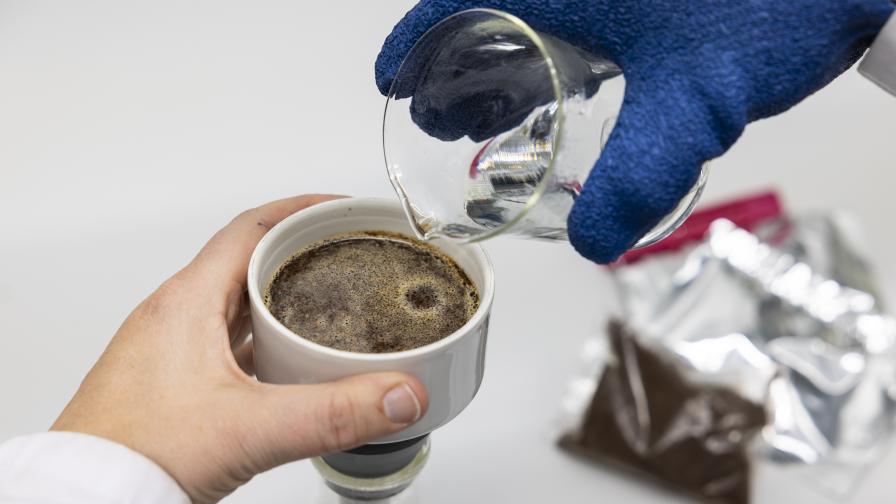Is a New Coffee-Growing Ecosystem Brewing on the Horizon?

Care for a cup of lab-grown coffee? Here, coffee is being made via VTT Research Centre of Finland’s cellular agriculture method. This could be the next coffee-growing ecosystem.
Photo by Vesa Kippola

While lab-grown coffee doesn’t sound very appetizing, the unique production process might be a vital key to the crop’s future. Scientists at the VTT Research Centre of Finland have successfully grown and brewed coffee in a laboratory. How did they do it? They recently released detailed information on the process in the Journal of Agriculture and Food Chemistry.
The team of researchers actually made their caffeine-fueled project come to fruition back in 2021. Fast forward to now where the recently published scientific paper reveals the process the scientists used to produce coffee. This includes starting from the original coffee plant itself, establishing cell cultures to alter its aroma in the roasting process, caffeine content, flavor analysis, and even sensory profiling by a panel of tasters.
Motivating Factors
So, why did they take up this endeavor to grow coffee in a lab? Sustainability issues in coffee production perk up as a main driver. “While demand for coffee is rising, the production of coffee beans faces multiple sustainability challenges, concerning land and water use, laborers’ rights, and climate change,” reads a portion of a news release from VTT.
These issues are certainly not unique to coffee crops. The controlled environment ag sector continues to grow in importance and relevance amid these challenges.
DYK? Indoor coffee growing could actually speed up the production considerably, according to VTT’s research data. “Lab-grown coffee has the potential to speed up coffee production significantly. Traditionally farmed coffee provides 1 to 2 harvests per year, whereas a new batch of lab-grown coffee can be made in a month due to the controlled process and the infinitely renewable nature of coffee plant cells that removes the need to grow new coffee plants from seeds.”
RELATED CONTENT: Better Latte Than Never for New Coffee Growing Ventures in California
Cup Half Full
Promising attributes aside, it sounds like the possibility of picking up a cup of your favorite lab-grown coffee is still quite a ways down the road. To help make that prospect into reality, Dr. Heiko Rischer, Principal Scientist and Head of Plant Biotechnology at VTT, says an ecosystem dedicated to the production and commercialization of lab-grown coffee is what’s needed.
“It’s one thing to grow coffee cells in a bioreactor,” Rischer says. “Making it a commercially viable product is a whole other matter.”
So many factors go into what makes each batch of coffee we consume now unique. Different cultivars of the plant material, soil quality, elevation, climate, when the beans were grown, and more are in that mix. Rischer points out that taking some of these variable out of the equation could mean a more consistent, quality product. “While lab-grown coffee is much more controlled, different approaches to, for example, roasting significantly impact the aroma profile of the coffee, which is a key consideration for the consumer.”
Creating a whole new type of coffee is an interesting and ambitious task. The scientists at VTT have their proof of concept. What’s next? Time will tell. Might as well put on a pot of coffee and wait. Cheers!
SOME FUN COFFEE CONSUMPTION FACTS:
What country has the highest coffee consumption per capita? – Finland (CoffeeFinders.com)
What country has the highest coffee consumption overall? – U.S. at 26,651,000 bags (WiseVoter.com)









